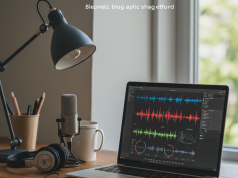Gone are the days when lead qualification relied solely on form fills and demographic data. Mid-market companies now leverage something far more revealing: behavioral signals that indicate genuine buying intent.
This shift represents perhaps the most significant evolution in inbound marketing strategy of the past decade. While enterprise companies pioneered these techniques, mid-market organizations now implement them with remarkable success.
The Limitations of Traditional Qualification
Traditional qualification methods asked prospects to self-report their interests, needs, and timelines. The problem? People often don’t accurately describe their own intentions.
A director who claims to be “just researching” might actually be deep in the buying process. Meanwhile, someone who selects “immediate purchase timeline” might simply want quick access to gated content.
Mid-market marketing teams discovered this disconnect through painful experience. High-scoring leads frequently went nowhere, while seemingly casual browsers suddenly converted without warning.
Behavioral Signals: Actions Speak Louder
Behavioral signals reveal what prospects actually do rather than what they say they’ll do. These digital footprints provide remarkably accurate pictures of genuine buying intent.
When someone visits your pricing page three times in a week, they’re actively evaluating costs – regardless of what they selected on your form. When they scrutinize customer case studies in your industry, they’re envisioning implementation.
These actions reflect authentic interest that traditional qualification metrics simply cannot capture.
Key Behavioral Patterns That Indicate Buying Intent
Certain behavioral patterns consistently correlate with higher conversion rates across mid-market companies.
Page sequencing matters enormously. Prospects who move from general information to specific solutions to implementation details typically show stronger intent than those who bounce randomly between topics.
Content consumption depth reveals engagement level. Someone who reads an entire case study signals different intent than someone who scans headlines for 15 seconds.
Return frequency tells a compelling story. Repeated visits to specific resources often indicate internal discussions are happening between visits.
At InboundMarketo, we’ve discovered that these patterns remain remarkably consistent across different industries, though the specific signals may vary.
Implementation Without Enterprise Budgets
Mid-market companies often assume these sophisticated approaches require enterprise-level technology investments. This simply isn’t true anymore.
Many existing marketing platforms now include behavioral tracking capabilities that were premium features just years ago. The key isn’t investing in new technology but fully utilizing what you already have.
Start by identifying 3-5 high-value actions that typically precede purchases in your specific business. Track these consistently before expanding to more complex signals.
The Privacy-First Approach
With increasing privacy regulations, ethical tracking becomes essential. Fortunately, the most valuable behavioral signals don’t require invasive data collection.
Focus on first-party data – information gathered directly through interactions with your own digital properties. This approach respects privacy while still providing remarkably accurate qualification insights.
Be transparent about data usage. Many mid-market companies find that customers actually appreciate personalization when it’s clearly explained and delivers genuine value.
Aligning Marketing and Sales Around Behaviors
Behavioral qualification works best when marketing and sales teams align on which signals matter most. This requires breaking down traditional department boundaries.
Sales teams often identify behavioral patterns that marketing overlooks. Their direct customer interactions reveal which pre-purchase behaviors truly indicate buying intent.
Meanwhile, marketing sees patterns across larger prospect populations that individual sales representatives might miss.
Beyond Basic Tracking: Progressive Behavioral Profiles
Leading mid-market companies now build progressive behavioral profiles that evolve as prospects engage more deeply with their content.
Rather than making single qualification decisions, they continuously refine their understanding of each prospect’s journey. This creates remarkably accurate predictions about purchase timing and product fit.
Initial interactions establish baseline interest. Subsequent behaviors reveal specific needs and concerns. Late-stage signals indicate buying authority and timeline.
Practical Application: Behavioral Response Frameworks
The most effective mid-market inbound programs develop specific response frameworks triggered by behavioral signals.
When prospect behaviors indicate early-stage evaluation, automated nurture sequences might deliver comparative content that addresses common questions.
As behaviors shift toward implementation concerns, more personalized outreach from sales becomes appropriate. This precisely timed intervention dramatically improves conversion rates.
Measuring Impact: New Qualification Metrics
Traditional lead scoring focused on quantity metrics – how many MQLs entered the pipeline. Behavioral qualification demands more sophisticated measurement.
Forward-thinking mid-market companies now track predictive accuracy – how often behavioral signals correctly anticipated purchase decisions. They measure engagement quality over simple volume.
Most importantly, they evaluate revenue impact rather than lead quantity. The ultimate test of any qualification system is whether it identifies prospects who actually become customers.
The Future: Predictive Behavioral Qualification
As mid-market companies master basic behavioral tracking, many now move toward predictive models that anticipate future behaviors.
These systems don’t just react to prospect actions – they forecast likely next steps based on similar patterns from previous customers. This allows for remarkably precise resource allocation.
The technology supporting these approaches continues evolving rapidly, making sophisticated prediction increasingly accessible to mid-market organizations.
Getting Started: The Incremental Approach
Implementing behavioral qualification doesn’t require wholesale system changes. The most successful mid-market companies start by identifying just a few high-value signals and building from there.
Begin by analyzing your existing customers’ journeys. Which digital behaviors consistently preceded their purchases? These patterns reveal your most valuable qualification signals.
Test these signals with a small prospect segment before scaling. This measured approach minimizes disruption while demonstrating clear ROI for broader implementation.
The transformation in qualification methodology represents not just a tactical shift but a fundamental rethinking of how we understand buying intent in the digital age. For mid-market companies seizing this opportunity, the rewards include more efficient resource allocation, higher conversion rates, and ultimately, accelerated growth.




